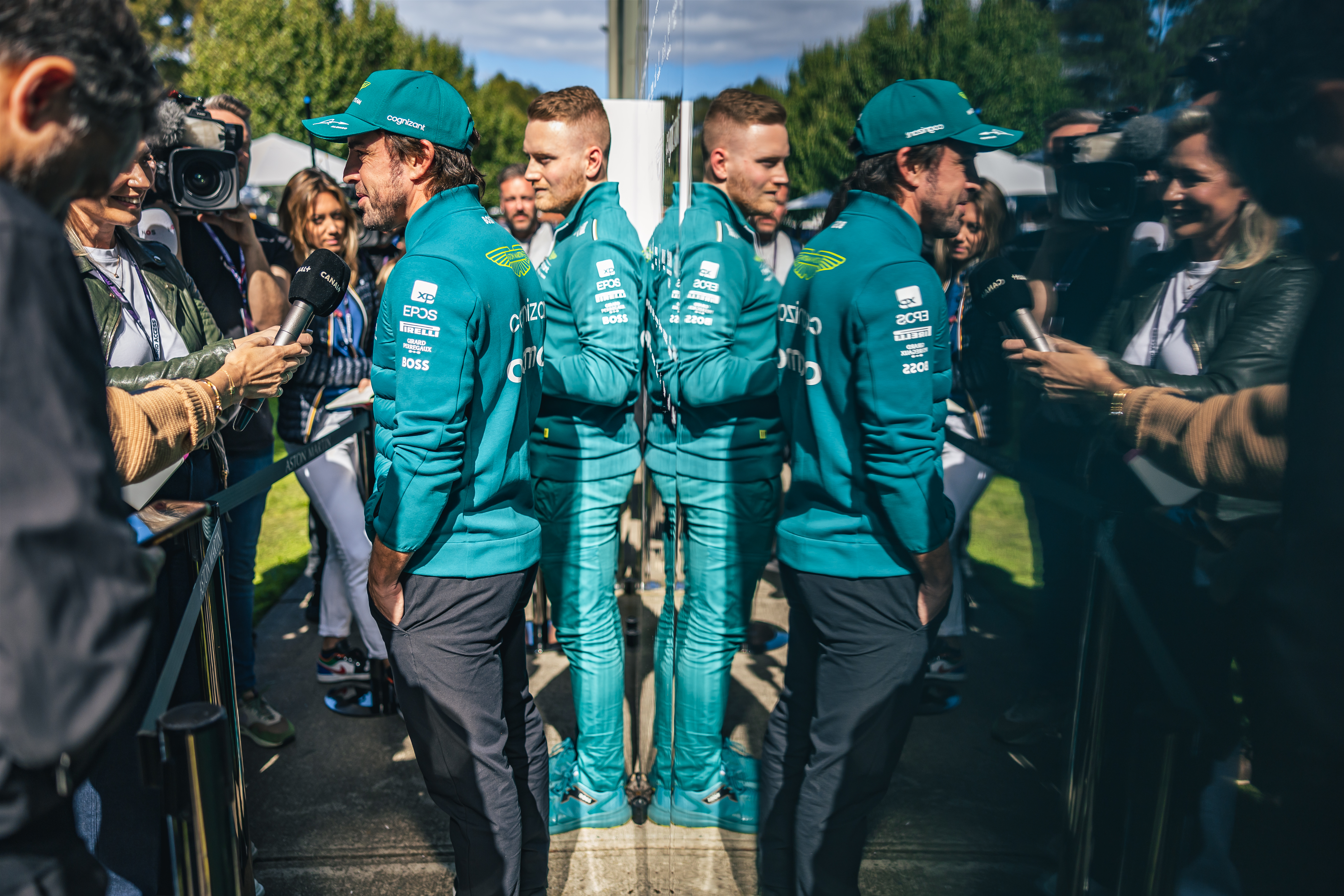Up Next

The FIA has issued a rules clarification clarifying what constitutes the car being “worked on” during a penalty pitstop after Fernando Alonso was hit with a 10-second penalty following the Saudi Arabian Grand Prix that was later rescinded.
Following a review of what happened in Saudi Arabia, where Aston Martin successfully sought a right to review the penalty and had it reversed having touched the car both with the front and rear jacks while Alonso was serving a five-second penalty at his pitstop on the 18th lap of the race at Jeddah, the FIA has, as expected, issued a spring directive to prevent a repeat.
The sporting directive clarifies Article 54.4 of the sporting regulations, which states that “whilst a car is stationary in the pitlane as a result of incurring a penalty…it may not be worked on until the car has been stationary for the duration of the penalty”.
The key part of the sporting directive states that when pitstop penalties are served “the physical touching of the car or drive by hand, tools or equipment (including the front and rear jacks) during any such penalty will all be considered to constitute work)”.
This means the car cannot be touched in any way while a time penalty is served at the start of a pitstop.
In Alonso’s case, Aston Martin presented minutes of a recent sporting advisory committee meeting and video evidence of “seven instances where cars were touched by the jack during such penalties” that led to its post-race penalty being removed.

The new sporting directive means there should now be no gap in the understanding of how the regulation should be applied between the stewards and teams to avoid a repeat of the controversy
The sporting directive also states emphatically that “the use of cooling fans during a penalty is permitted providing any such fan does not physically touch the car”. It also codifies the convention that allows multiple penalties to be served consecutively in a single pitstop.
These changes are part of a series of “key findings” from the FIA’s analysis of the Saudi Arabian Grand Prix that also led to the widening of the grid boxes by 20cm and the addition of a painted white centreline to help drivers with limited visibility place their car legally.
This was the cause of Alonso’s initial penalty as he was found to have positioned his car too far left at the start. Alpine driver Esteban Ocon was hit with a similar penalty in the season-opening Bahrain Grand Prix.
The FIA also states that “several other elements are under discussion for potential further improvement” in order to ensure what it calls “common practices” that are not clearly defined or documented in the regulations are formally outlined in the future either in the rules or by sporting directive.
There will also be “consideration of the various procedures that lead to time delays in the event of late-race reports to the stewards” given how late Alonso’s second penalty was applied.





